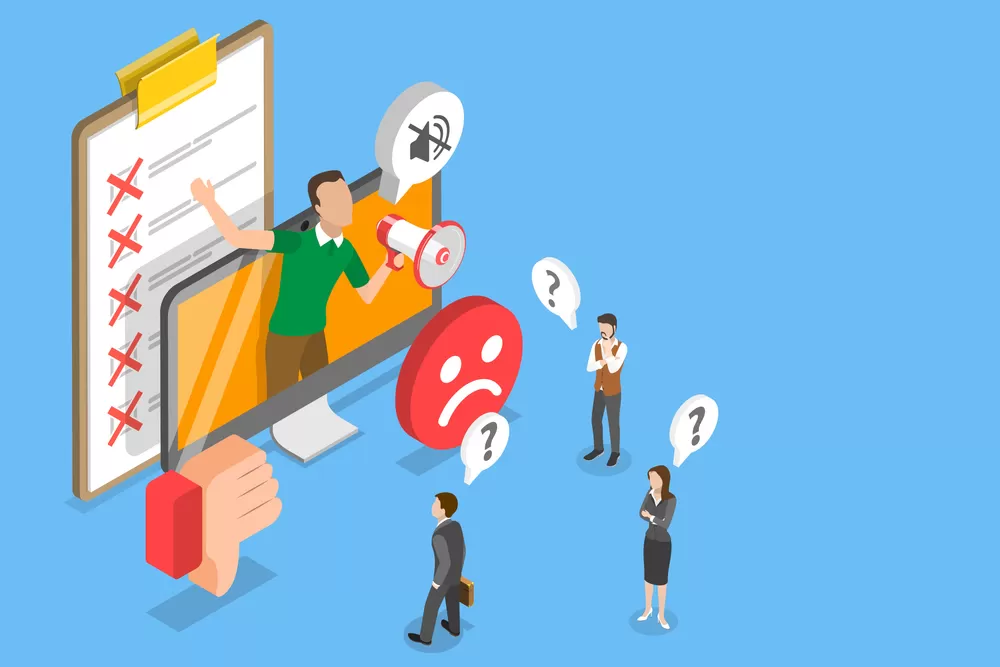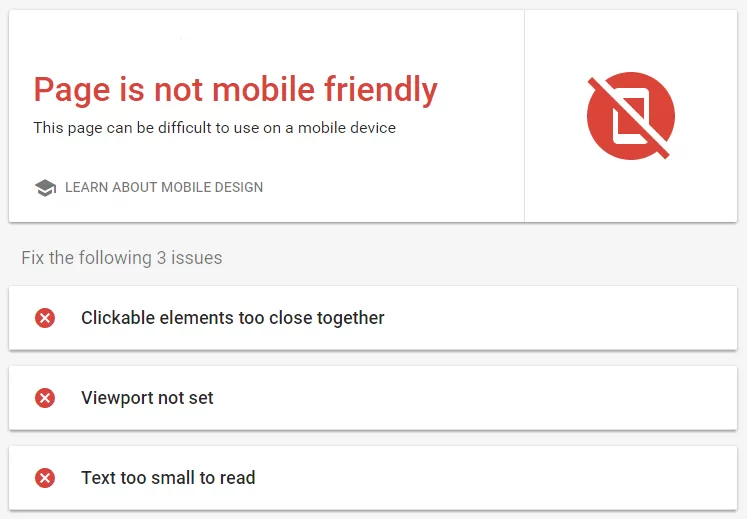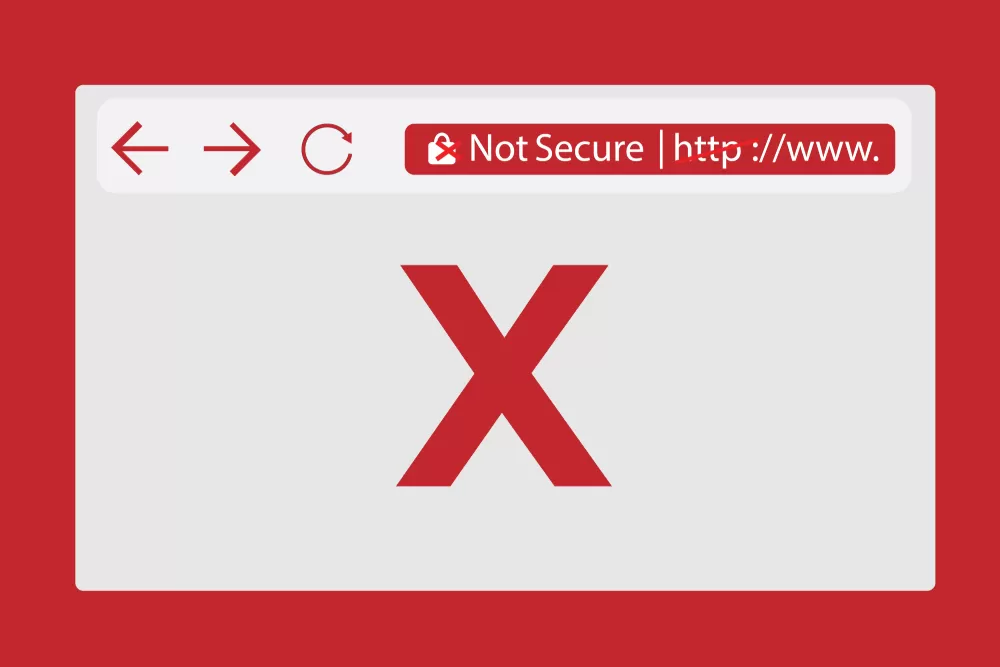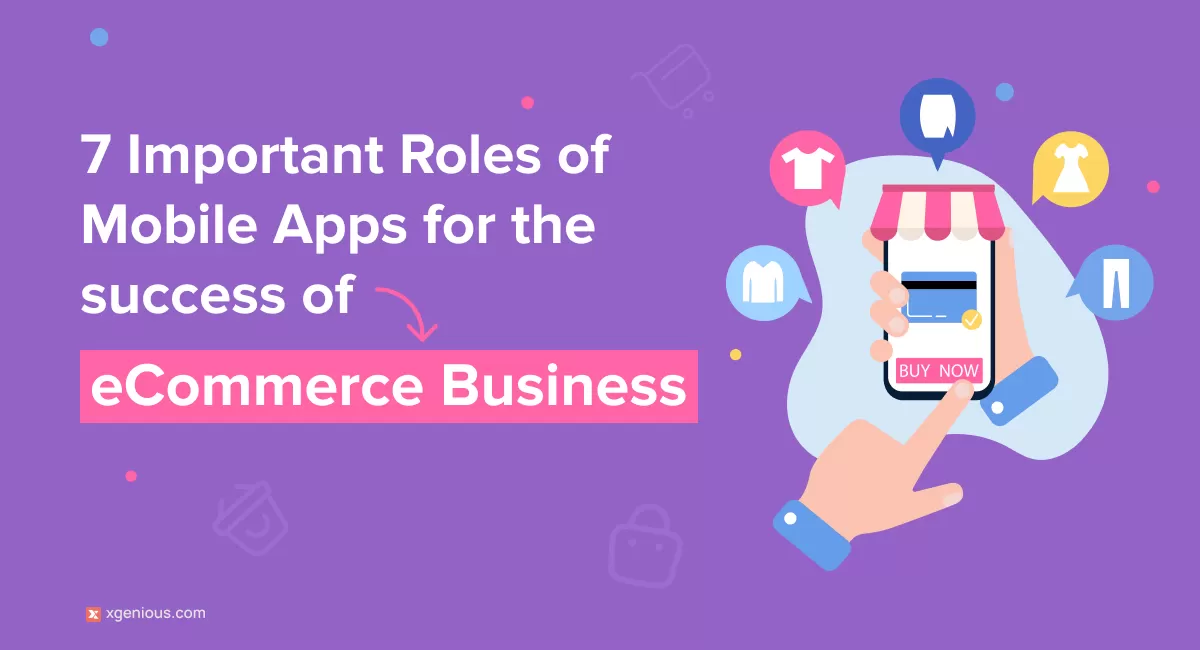In today’s digital age, ecommerce has become an essential part of many businesses.
As more and more consumers turn to online shopping, the ecommerce industry has become increasingly competitive.
However, in the rush to establish an online presence, many ecommerce businesses owner make common mistakes that can impact their success.
That’s why in this article, we will explore some of the most common ecommerce mistakes and discuss strategies for avoiding them.
First, we will let you know the importance of choosing the right ecommerce platform and how it can impact the success of an online business.
We will also discuss the critical role of website design and user experience, including the importance of responsive design, navigation, and product descriptions.
Finally, we will discuss the importance of customer service and security, as well as the critical role of data analytics in helping businesses make informed decisions.
By understanding and addressing these common ecommerce mistakes, businesses can create a strong online presence and retain customers in today’s competitive ecommerce landscape.
So, let’s dive in and explore the key strategies for avoiding common ecommerce mistakes and achieving success in the online marketplace.
What Can go Wrong With Ecommerce?
Cyberattacks and Data Breaches: One of the most significant risks in ecommerce is the threat of cyberattacks and data breaches. According to a report by RiskIQ, cybercrime against ecommerce sites increased by 25% in the first quarter of 2021 alone, with an average of 1.5 million attacks per week. These attacks can lead to stolen customer data, lost revenue, and reputational damage.
Poor Website Design and Functionality: A slow or poorly designed website can lead to high bounce rates, low conversion rates, and lost sales. According to a report by Google, mobile sites that load in under 5 seconds have a 70% longer average session duration than those that take longer than 5 seconds to load.
Lack of Customer Trust: Consumers are wary of sharing personal and financial information online, and any perceived lack of security or trustworthiness can lead to lost sales. According to a survey by Statista, 17% of consumers cited concerns about online security and privacy as the reason for not shopping online.
Poor Customer Service: According to a report by HubSpot, 93% of customers are more likely to make repeat purchases from businesses that offer excellent customer service. Poor customer service can lead to negative reviews, lost sales, and reputational damage.
Why do Most People Fail in Ecommerce?
Lack of Understanding of the Ecommerce Industry: Many people may enter the ecommerce industry without fully understanding its complexities, including the technical requirements, marketing strategies, and competition. Without a clear understanding of these factors, it can be difficult to make informed decisions and develop a successful ecommerce business.
Poor Business Planning: Ecommerce businesses require careful planning, including market research, financial projections, and a solid business plan. Without a clear plan, it can be difficult to stay focused, make strategic decisions, and manage resources effectively.
Lack of Capital: Starting an ecommerce business requires a significant amount of capital, including investment in technology, inventory, marketing, and staffing. Without sufficient funding, it can be difficult to develop a strong online presence and compete in a crowded marketplace.
Ineffective Marketing Strategies: Effective marketing is essential for driving traffic and sales in ecommerce, but many businesses struggle to develop effective marketing strategies. In order to succeed, ecommerce businesses must develop a deep understanding of their target market, develop a strong brand identity, and leverage a variety of marketing channels to reach
potential customers.
Poor Website Design and User Experience: An ecommerce website that is difficult to navigate, slow to load, or visually unappealing can be a significant turnoff for potential customers. A lack of attention to website design and user experience can lead to lost sales, high bounce rates, and a poor reputation.
20 Most Common eCommerce Mistakes Explain
Choosing The Wrong Ecommerce Platform
Not all eCommerce platforms are created equal, and some may lack certain functionalities that your business needs to succeed.
For example, some platforms may not offer features such as multi-language support, multi-currency support, or the ability to integrate with third-party tools and software that you may need for your business.
As your business grows, you may need to scale up your eCommerce platform to accommodate the increased demand.
Choosing a platform that can’t handle your business’s growth can lead to performance issues, downtime, and other technical problems.
Different eCommerce platforms have different pricing models, and choosing the wrong platform can result in higher costs than necessary.
Before choosing an eCommerce platform do proper research. Which eCommerce platform goes best with your business?
Not Knowing Your Target Audience

Not knowing your target audience can have a significant negative impact on your eCommerce business.
If you don’t understand your target audience, you may struggle to attract and convert potential customers.
Your marketing messages may not resonate with your audience, and you may struggle to create compelling offers that appeal to their needs and desires.
Without a clear understanding of your target audience, you may not know what products or services to offer.
This can lead to an inadequate product selection that doesn’t meet the needs or preferences of your potential customers.
Finally, not knowing your target audience can cause you to miss out on significant opportunities to grow your eCommerce business.
You may miss trends or changes in your industry, or fail to develop new products or services that meet the evolving needs and preferences of your audience.
Not Optimizing Your Site for Mobile Devices

With the rise of mobile device usage, a significant 70% of eCommerce traffic comes from smartphones and tablets.
If your website is not optimized for mobile devices, it can lead to a poor user experience, including slow loading times, difficult navigation, and unreadable text or images.
This can frustrate potential customers and drive them away from your website.
A website that is not responsive can lead to a high bounce rate, where visitors leave your website without making a purchase.
This can reduce your website’s conversion rate and ultimately impact your revenue and profit margins.
Managing a separate mobile version of your eCommerce website can be costly and time-consuming, requiring additional development resources and maintenance costs.
Search engines such as Google prioritize responsive websites in their search results, meaning that a website with a non-responsive design may not rank well in search engine results pages (SERPs).
This can decrease the visibility of your website to potential customers.
Too Much Loading Time
Slow loading times can frustrate visitors to your website and lead to a poor user experience.
Visitors may become impatient and leave your website before even seeing your products or services, which can result in a high bounce rate and low conversions.
Slow loading times can reduce the likelihood of visitors making a purchase on your website.
If visitors have to wait too long for your website to load, they may become frustrated and leave your website before completing their purchase.
Google prioritize websites with fast loading times in their search results.
Finally, slow loading times can cause you to miss out on significant opportunities to grow your eCommerce business.
Visitors may leave your website and go to a competitor’s website with faster loading times, resulting in lost potential revenue and market share.
Poor Navigation

Poor navigation can significantly affect eCommerce by leading to a negative user experience, reduced conversions, and ultimately, decreased revenue for your business.
If your website’s navigation is unclear or confusing, it can be challenging for visitors to find the products they are looking for.
This can lead to a high bounce rate, where visitors leave your website without making a purchase.
When visitors find it difficult to navigate your website, they may become frustrated and lose interest in your brand.
This can lead to a lower level of engagement with your website and products, reducing the likelihood of conversions.
Poor navigation can cause visitors to miss out on other products or services that they may be interested in, leading to lost opportunities for cross-selling and upselling.
Poor UX Design
If your website has a poor UX design, visitors may become frustrated and leave your website without making a purchase.
This can result in a high bounce rate, where visitors leave your website without taking any action.
Poor UX design can also lead to an increase in customer support requests.
Visitors may have difficulty finding information or completing the checkout process, leading to an increase in support requests and ultimately impacting your business operations.
Poor UX design can also lead to a reduction in conversions.
Visitors may find it difficult to navigate your website or complete the checkout process, leading to a lower conversion rate and ultimately impacting your revenue.
Over Use of Pop-ups

Overuse of pop-ups can distract visitors from browsing and making purchases on your website, leading to a poor user experience.
This can cause visitors to become frustrated and leave your website without completing a purchase.
Pop-ups can also lead to an increased bounce rate, where visitors leave your website without taking any action.
This can be especially damaging to your eCommerce business, as it can reduce the likelihood of visitors making a purchase and ultimately impact your revenue.
Use Low-Quality Image
In your opinion what attracts most a customer when they visit your website? The answer is the image.
The ultimate goal of your eCommerce website is to push your visitors into potential customers.
The use of low-quality images affects your sales. Use high-quality and eye catchy images for your website.
Showcase your products from a different angle. To such an extent your customers are forced to buy your products.
Low-quality images can provide a poor user experience for visitors to your website. Poor user experience due to low-quality images can also lead to a reduction in conversions.
It also lead to a negative perception of your brand.
Not Having Any Product Category

Without product categories, visitors may find it difficult to navigate your website and find the products they are looking for.
This can lead to frustration and a poor user experience, potentially causing visitors to leave your website without making a purchase.
Product categories can also have a positive impact on SEO.
Without product categories, it may be more difficult for search engines to understand the structure of your website.
Missing CTA Button
A Call-to-Action (CTA) button is a critical element in any eCommerce website, as it is the primary way to guide your customers towards making a purchase.
Without a CTA button, customers may not know what action to take next or may become frustrated trying to figure out how to complete a purchase.
This can lead to decreased conversions as customers may abandon their shopping carts and leave your website without completing a purchase.
Missing a CTA button can also result in lost sales.
Customers who are unable to complete their purchases may abandon their shopping carts and may not return to your website in the future, resulting in lost revenue.
Not Having Product Description

A well-written product description provides detailed information about the product, including its features, benefits, specifications, and other relevant information.
This information helps customers make informed purchasing decisions by giving them a better understanding of the product.
Product descriptions can also help answer any questions that customers may have about the product.
This can help reduce the number of customer inquiries and support requests, freeing up time for your customer support team to focus on other tasks.
Finally, product descriptions can help establish your brand voice and tone.
By crafting product descriptions that align with your brand values and messaging, you can help build brand awareness and loyalty among your customers.
Not Optimizing For Search Engines
Optimizing your eCommerce website for search engines is crucial for the success of your online business.
By optimizing your website for search engines, you can increase your website’s visibility and reach a larger audience.
This can help drive more traffic to your website, leading to increased sales and revenue. A well-optimized website can help build trust and credibility with your customers.
By appearing higher in search engine results, customers are more likely to perceive your website as a trustworthy and credible source of information and products.
SEO involves optimizing your website’s structure and content to make it more user-friendly and accessible.
Lack of Security

If an eCommerce website lacks proper security measures, it can have serious consequences for both the business and its customers.
Without proper security measures, an eCommerce website is at risk of data breaches, which can result in sensitive customer information, such as credit card numbers and personal information, being stolen by hackers.
This can lead to financial loss for customers and damage to the reputation of the business. A lack of security can also damage the trust that customers have in the business.
Customers expect their personal and financial information to be kept secure when they make a purchase online, and a data breach can lead to customers feeling violated and losing faith in the business.
If customer data is breached due to a lack of security, an eCommerce website could face legal issues, including lawsuits, government investigations, and fines for failing to protect customer data.
If customers feel that their information is not secure on an eCommerce website, they may be hesitant to make a purchase, leading to a loss of revenue for the business.
Not Offering Enough Payment Options

By offering limited payment options, eCommerce businesses limit the choices available to customers.
This can be frustrating for customers who may prefer to use a particular payment method, leading to a negative user experience and potentially lost sales.
If customers cannot use their preferred payment method on an eCommerce website, they may choose to take their business elsewhere.
Customers expect eCommerce businesses to offer a range of secure and reliable payment options.
If an eCommerce business wants to sell products internationally, it is crucial to provide payment options that are widely accepted in different countries.
Not Having Guest Checkout
Guest checkout is a feature on an eCommerce website that allows customers to make purchases without creating an account or signing up for a membership.
It is a popular option for many customers who want to make a purchase quickly and easily, without having to go through the registration process.
Guest checkout is a convenient option for customers who may not want to create an account or remember login details.
By offering a guest checkout option, eCommerce businesses can improve the user experience and make it easier for customers to make a purchase.
By offering guest checkout, eCommerce businesses can potentially increase their sales by providing customers with an easy and hassle-free shopping experience.
Customers who are required to create an account may abandon their shopping cart if they do not want to go through the registration process.
Offering guest checkout can attract new customers who are not familiar with an eCommerce website or are hesitant to create an account.
Critical Checkout Process
A critical checkout process on an eCommerce website can have significant negative impacts on the user experience and ultimately hurt the business’s bottom line.
Customers who encounter a difficult or time-consuming checkout process may abandon their cart and leave the website without making a purchase.
This can result in lost sales and revenue for the eCommerce business.
A complicated checkout process can increase the cart abandonment rate, leading to a reduction in the average order value and overall revenue for the business.
Not Tracking Data and Analytics
Tracking data and analytics can help businesses understand customer behavior, such as how they navigate the website, which products they view, and how they complete their purchase.
This information can be used to improve the user experience, optimize the sales funnel, and increase sales.
By analyzing data and analytics, businesses can identify trends and patterns in customer behavior, such as the most popular products or the busiest times of day.
This information can be used to inform business decisions, such as which products to stock or when to run promotions.
Data and analytics can provide valuable insights into the effectiveness of marketing campaigns, such as which channels are driving the most traffic and conversions.
This information can be used to optimize marketing efforts and improve ROI.
This information can be used to troubleshoot and resolve problems before they have a significant impact on sales.
Blank About us Page
A number of eCommerce websites keep blank about us pages. Warning it’s a fatal mistake you are doing. The about page let your potential customers know about more your business.
Who you are, and what is your goal, for your products? The biggest portion of your customer is leaving your site because they are not getting enough information about you.
Bad Customer Service
Customers who receive bad customer service are more likely to leave negative feedback and reviews, which can damage the reputation of the eCommerce website and discourage potential customers from making purchases.
Customers who have a negative experience with customer service are less likely to return to the eCommerce website for future purchases, leading to a decrease in customer loyalty and repeat business.
Customers who encounter bad customer service may be more likely to abandon their cart and leave the website without making a purchase.
Not Adding Social Proof
Social proof is an important concept in eCommerce that refers to the influence that the actions and opinions of others have on our own behavior.
In other words, when people see others engaging with a product or brand, they are more likely to trust and follow suit.
Positive customer reviews can provide social proof by demonstrating that others have had a positive experience with a product or brand.
Reviews can also help to build trust and credibility with potential customers.
A large number of followers on social media can also provide social proof by indicating that a brand or product is popular and has a large following.
Partnering with influencers or celebrities can provide social proof by leveraging their existing following and reputation to promote a product or brand.
Tips For Not Making Mistakes on an eCommerce Website
Here are the bonus tips that will guide you to not make any errors so you can run your eCommerce business smoothly.
- Choose the right ecommerce platform for your needs and budget.
- Do proper research before starting an eCommerce business.
- Provide much information about your business.
- Make sure your website has a responsive design that works well on all devices, including smartphones and tablets.
- Use clear and descriptive product descriptions to help your customers understand what they are buying.
- Optimize your website for search engines to help customers find your products.
- Focus on effective marketing.
- Offer a variety of payment options to make it easy for customers to buy from your website.
- Implement effective security measures to protect your customers’ data and build trust with them.
- Provide excellent customer service to create a positive experience for your customers and encourage repeat business.
- Use data analytics to track customer behavior and make informed decisions about your ecommerce strategy.
- Clear and concise return policy and terms and conditions.
- Finally and most importantly don’t lose hope and confidence.
Final Thought
Achieving success in the eCommerce business takes time. You will make mistakes, and your business may rise and fall but that doesn’t mean you should quit.
You know mistakes are a common part of our life.
There are many common mistakes that ecommerce businesses can make, but with careful planning and attention to key areas such as website design, user experience and marketing businesses can avoid these pitfalls.
Without committing mistakes you are not going to learn anything. Learn from your mistake so that you became aware of the next step.
By taking these steps to avoid common ecommerce mistakes, businesses can position themselves for long-term success and growth in the dynamic and ever-changing ecommerce industry.




